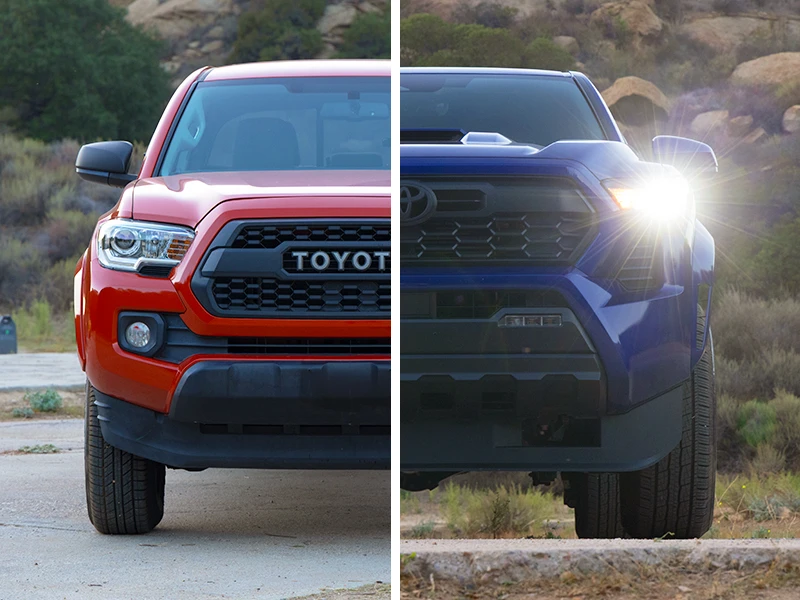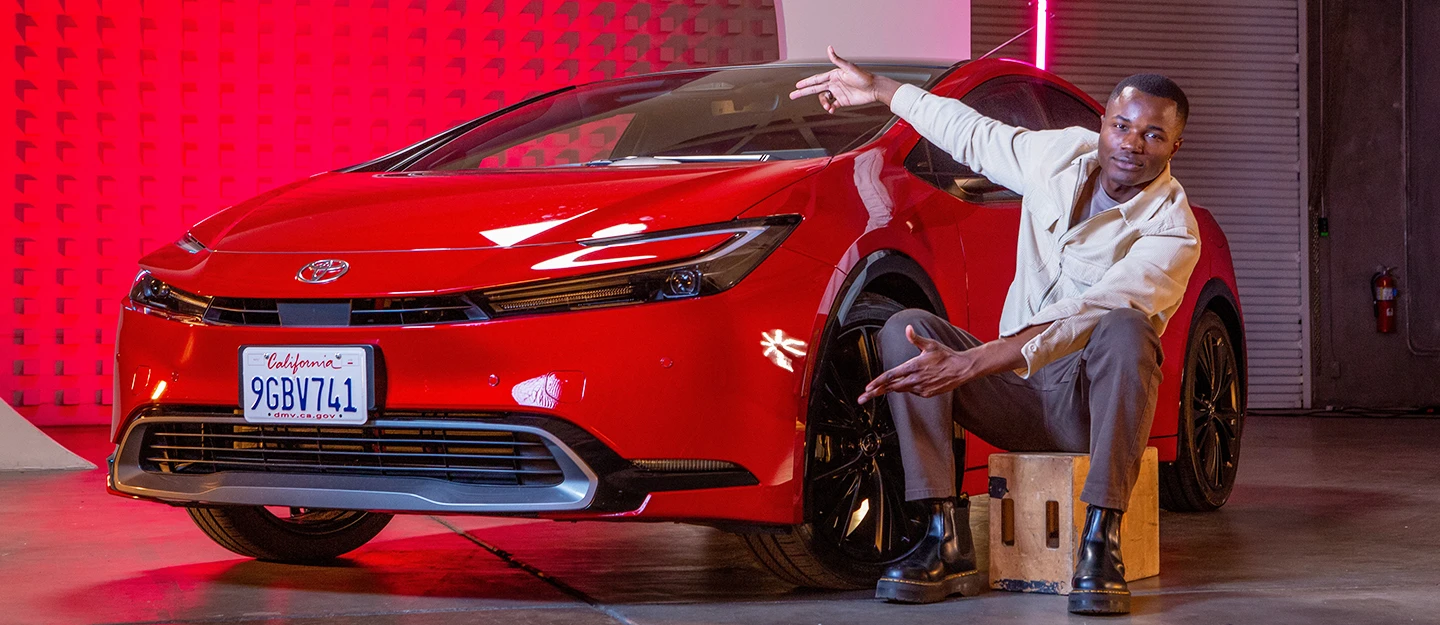
Article Summary:
Hybrids, which blend gas engines with electric motors, have been around since 1901, but gained popularity with the Toyota Prius in 1997.
Recent hybrids offer better fuel economy, like the 2023 Prius with an EPA-estimated 57 mpg combined, and fewer compromises in power and storage compared to earlier models.
Full hybrids (like Prius) don't require plugging in, while Plug-in Hybrids (like RAV4 Prime) offer some all-electric driving range.
Newer hybrid models, including pickups and SUVs, provide comparable features and performance to conventional vehicles while improving fuel efficiency.
With advances in technology, hybrids have become more versatile and attractive options for saving on fuel without fully transitioning to electric vehicles.
And how have hybrids improved recently?
With thousands of vehicles in our inventory, we’re here to help make car research easier for you. We’ve partnered with car-review experts from Edmunds to weigh in on what matters most when you’re looking to buy a truck or car.
***
Believe it or not, the first hybrid was NOT the Toyota Prius. Hybrids have actually been around since 1901, back when electric vehicles made up 30% of all vehicles on the road in the United States. Ferdinand Porsche, the founder of the company that brought you the 911 and Taycan, produced the first hybrid, the Lohner-Porsche Mixte. As the name implies, it had a gas engine mixed with an electric motor powered by a battery.
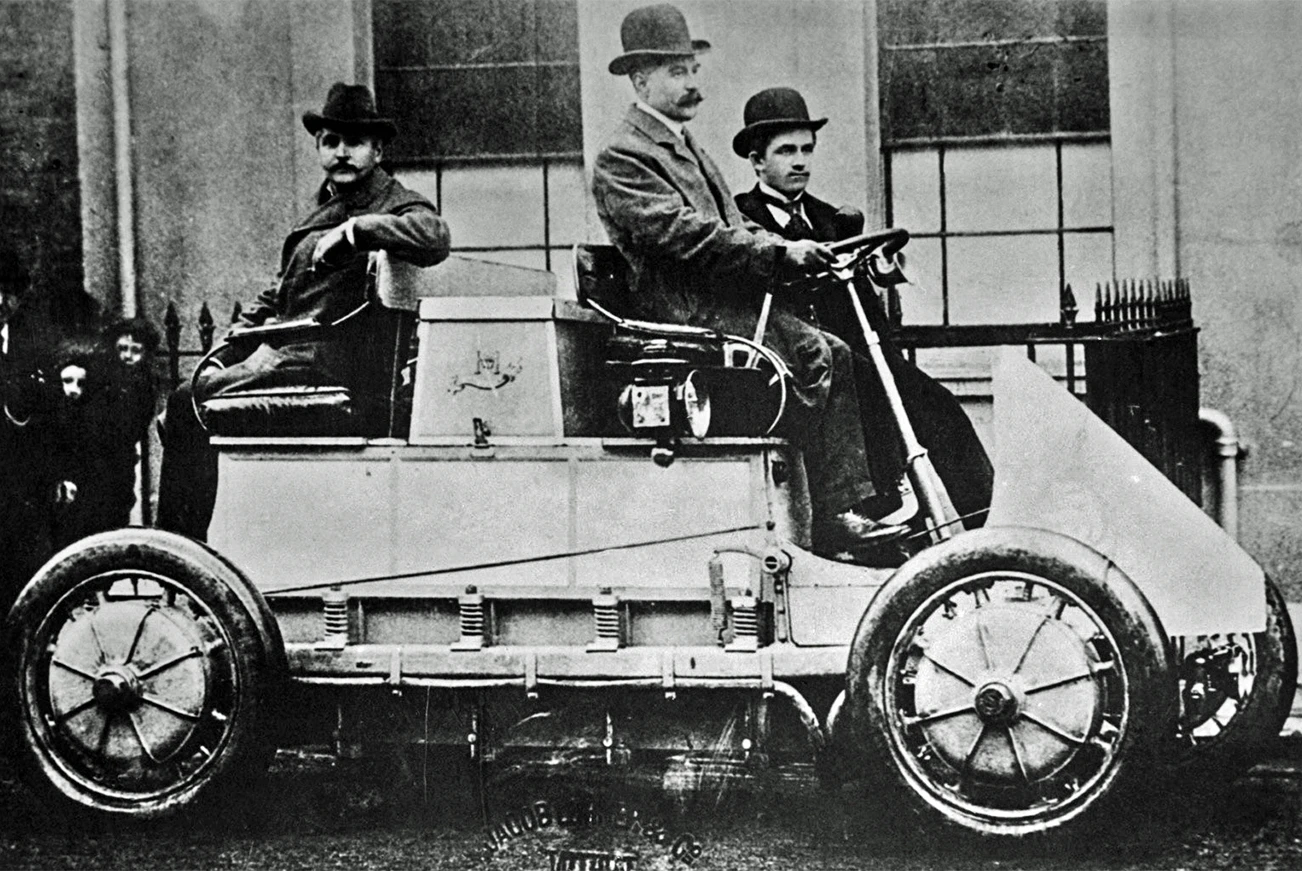
Proving that sometimes old ideas just need modern technology to work, that same formula supports the wave of modern hybrids that started with the Toyota Prius in 1997. The Prius became a worldwide sensation in 2000 when it was released, and it gave both hybrids and electric cars more prominence and credibility.
Today, hybrids aren't limited to the egglike design of the original Prius, and they've come a long way since the wagon Porsche built more than a century ago. A hybrid can be almost anything, from a pickup truck to an SUV to a conventional sedan. As of 2019, more than 30 different hybrid models were available in the United States. And those models come in more flavors than ever.
What is a hybrid car?
A hybrid car is a vehicle with a gas-powered engine that also includes an electric motor. You can think of hybrids as the ligers of motor vehicles: They combine technology that you'll find in a conventional gas car and an electric vehicle. That combination helps save you money at the gas pump thanks to a more efficient motor.
Considering whether an electric car might suit you over a hybrid? Take a look at this list of the electric vehicles with the longest range.
How do hybrids work?
Hybrids combine two or more power sources, usually an internal combustion engine and an electric motor, to provide a more efficient driving experience. Typically, a vehicle can drive using just one power source or by combining the two. This is managed by an onboard computer that juggles driving style, the amount of power you need, and the remaining juice in the battery.
How does that save fuel?
Using an electric motor takes a little bit of the burden off the gasoline engine. Think about carrying a heavy piece of furniture up a flight of stairs; the job gets a lot easier when you have a friend to help. The electric motor is the friend helping you move, and you don't even need to feed it a box of pizza when the job is done. Hybrids were also the first vehicles to use stop-start systems, which have become popular on non-hybrids, too. The stop-start system switches your vehicle to electric power when it comes to a complete stop, which helps you save fuel by limiting idling. When it's time to go again, your vehicle uses the electric motor to do the heavy lifting of moving away from a dead stop, which is also an important fuel saver.
Do you need to plug a hybrid into a wall?
A full hybrid, like the Toyota Prius or Honda Insight, doesn't need to be charged. Its onboard battery is recharged using regenerative braking and the onboard engine's power. However, you can find plug-in hybrid vehicles (PHEV) in a whole range of makes and models, including the Prius and Toyota RAV4 Prime. These add some EV-only range, allowing them to operate without the gasoline engine for a few miles. We wrote a whole article on PHEVs and how they compare to full hybrids and electric vehicles.
Curious about charging a plug-in hybrid or full electric car? Here's what you need to know about public fast charging and the different charger types.
What's regenerative braking?
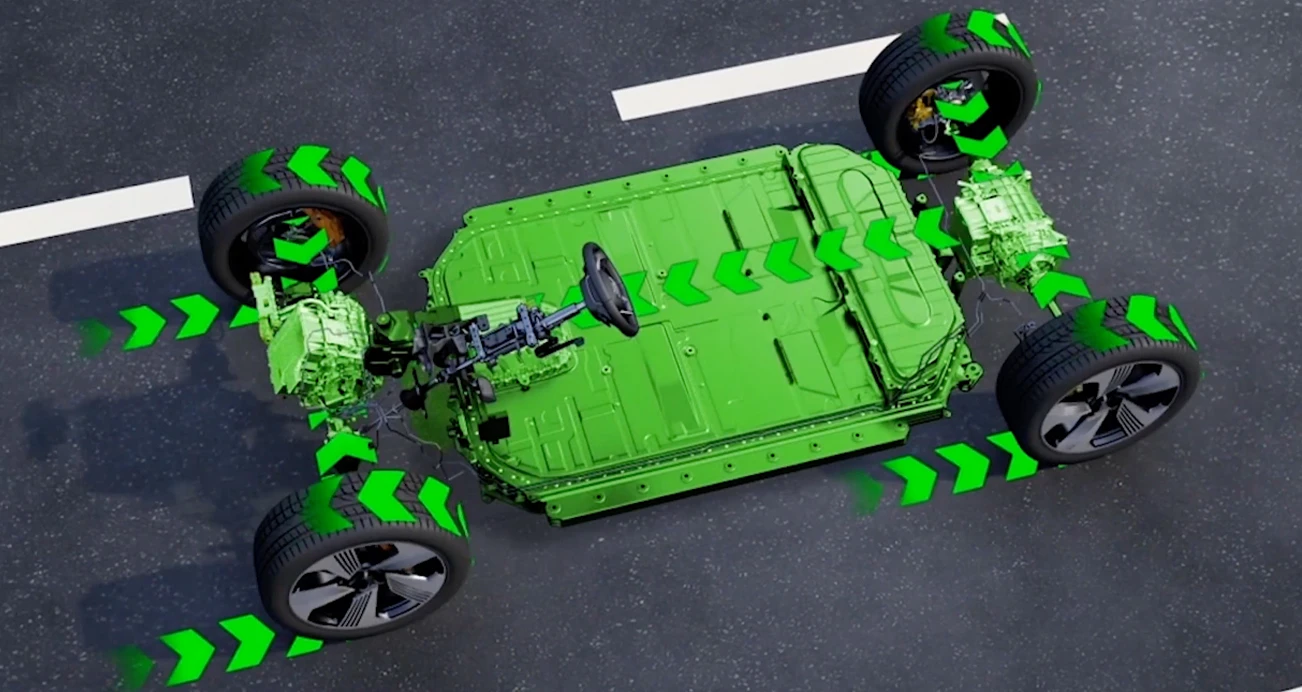
When you slow down your hybrid, either by coasting or hitting the brakes, the electric motor hops into generator mode. It takes the kinetic energy of your vehicle moving forward and turns that into electrical energy. That recharges the battery in your hybrid, giving it the power to help out your gasoline motor. This is also how full battery-electric vehicles maximize their range.
Why choose a hybrid?
If you'd like to save money on gas but aren't sure about switching to a fully electric vehicle, a hybrid might interest you. You can get a hybrid that gets more than 50 miles per gallon without worrying about range or how or where you'll charge your vehicle—even a plug-in hybrid can get impressive gas mileage without a charged battery thanks to regenerative braking.
There are also more choices than ever if you're interested in a hybrid. There are hybrid pickup trucks like the Ford F-150 hybrid in addition to SUVs ranging in size from the small Toyota RAV4 Prime to the midsize Kia Sorento hybrid. The Prius is the best-selling hybrid of all time, but you won't suffer for choice when it comes to shopping for a hybrid.
What kinds of hybrid vehicles are there?
There are three main types of hybrid vehicles: full hybrids, plug-in hybrids, and mild hybrids.
Full hybrids combine a gasoline engine with an electric motor, like the Toyota Prius or the Kia Niro. You don't have to plug these vehicles into a wall outlet, and you still reap benefits like great fuel economy and lower emissions.
Plug-in hybrids (PHEVs) have a larger electric battery than you'll find on a full hybrid and pair that battery with an electric motor and gasoline engine. To get the full benefit of a PHEV, you'll need to charge it from time to time, allowing you to drive your vehicle without burning any gas. The most impressive PHEVs, like the BMW X5 and Ford Escape plug-ins, can go more than 30 miles on a single charge.
Mild hybrids use a small electric motor and battery to aid a car's gasoline engine. Mild hybrids, such as the Ram 1500 with eAssist, can't be driven on all-electric power, and the mild hybrid systems typically only help start up vehicles and take over powering many of the electrical systems in a car. Some provide a very light assist to the engine itself, such as BMW’s eBoost system found in the BMW M340i. These systems became more common in the mid-2000s, as vehicle makers struggled to complete the transition to full hybrids and electric vehicles. While they're not as efficient as full hybrids or PHEVs, they can deliver improved fuel economy.
How have hybrids improved?
Hybrids are more refined than when the Prius debuted, offer better fuel economy, and have fewer compromises. As little as 10 years ago it was common for hybrids to have less storage and less horsepower than their all-gasoline counterparts. That's increasingly not the case with hybrids built in the last five years.
While there are only a few truly sporty hybrids available, including the BMW i8 and Polestar 1, modern hybrids have less trouble getting up to speed on a highway. The 2023 Toyota Camry Hybrid makes 176 horsepower, just a bit short of the 202 horsepower the all-gas version produces, and comparable to all-gas vehicles like the 180-horsepower Kia K5.
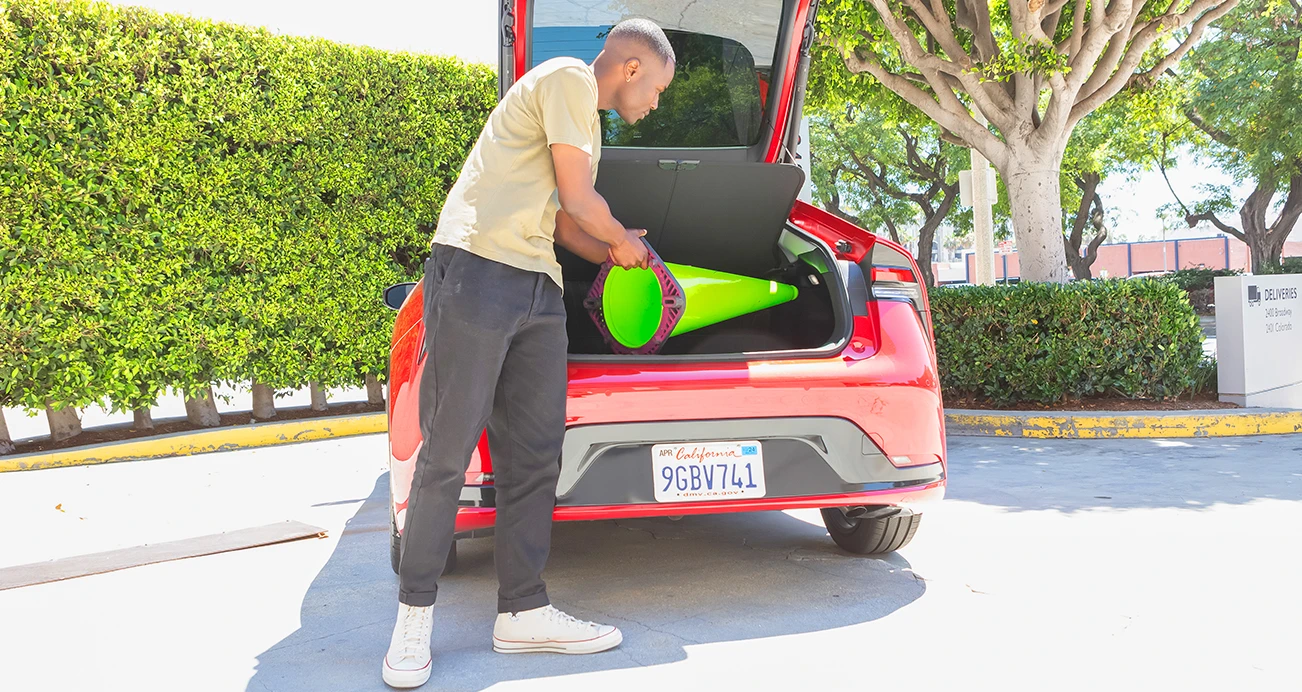
Storage is also improved thanks to advances in battery technology. Starting in 2018, the Honda Accord Hybrid has the same rear cargo space as the all-gas version (16.7 cubic feet). The 2023 Toyota RAV4 Prime, a hybrid, loses about 6 cubic feet of storage space compared to its gas-powered sibling, but its 33.5 cubic feet of cargo area storage is solid for a compact SUV.
Perhaps most importantly, fuel economy has improved. The 2008 Toyota Prius got 46 mpg while its 2023 counterpart racks up 57 mpg according to the EPA estimate
. The number of hybrids that net more than 50 mpg has increased, too. More than 60 hybrids meet that standard, with vehicles as old as the 2010 Toyota Prius and as new as the 2021 Kia Niro getting 50 miles per gallon.Fewer compromises than ever
Most hybrids don't compromise much, if at all, when it comes to power and cargo space. The F-150 hybrid has 12,700 pounds of towing capacity when properly equipped, and the Camry and Accord hybrids offer similar horsepower to their all-gas counterparts.
Perhaps most importantly, fuel economy has improved. The 2008 Toyota Prius got 46 mpg while its 2023 counterpart racks up 57 mpg according to the EPA estimate.
The number of hybrids that net more than 50 mpg has increased, too. More than 60 hybrids meet that standard, with vehicles as old as the 2010 Toyota Prius and as new as the 2021 Kia Niro getting 50 miles per gallon.In fact, the Accord hybrid is considered a higher trim of the standard Accord, with every 2023 Accord past the lowest two trims equipped with a hybrid powertrain. That means you’ll get improved fuel economy (an EPA-estimated 48 mpg for the hybrid compared to 32 mpg for the standard engine
) in addition to features like wireless Apple CarPlay® and Android Auto™ and an improved touchscreen.What are some popular hybrid cars?
Here are the five most popular hybrids available at CarMax from January 2023 to June 2023.
Toyota Prius

The Toyota Prius is probably the first vehicle you think of when you think of a hybrid. It has been around for more than 20 years and was redesigned for the 2023 model year. A Prius released in the past five years gets you a hatchback with great fuel economy (upward of an EPA-estimated 50 mpg combined
), stellar visibility, and a quiet cabin. While it's still no sports car, the Prius now comes with fewer of the trade-offs early adopters accepted.Toyota RAV4 Hybrid
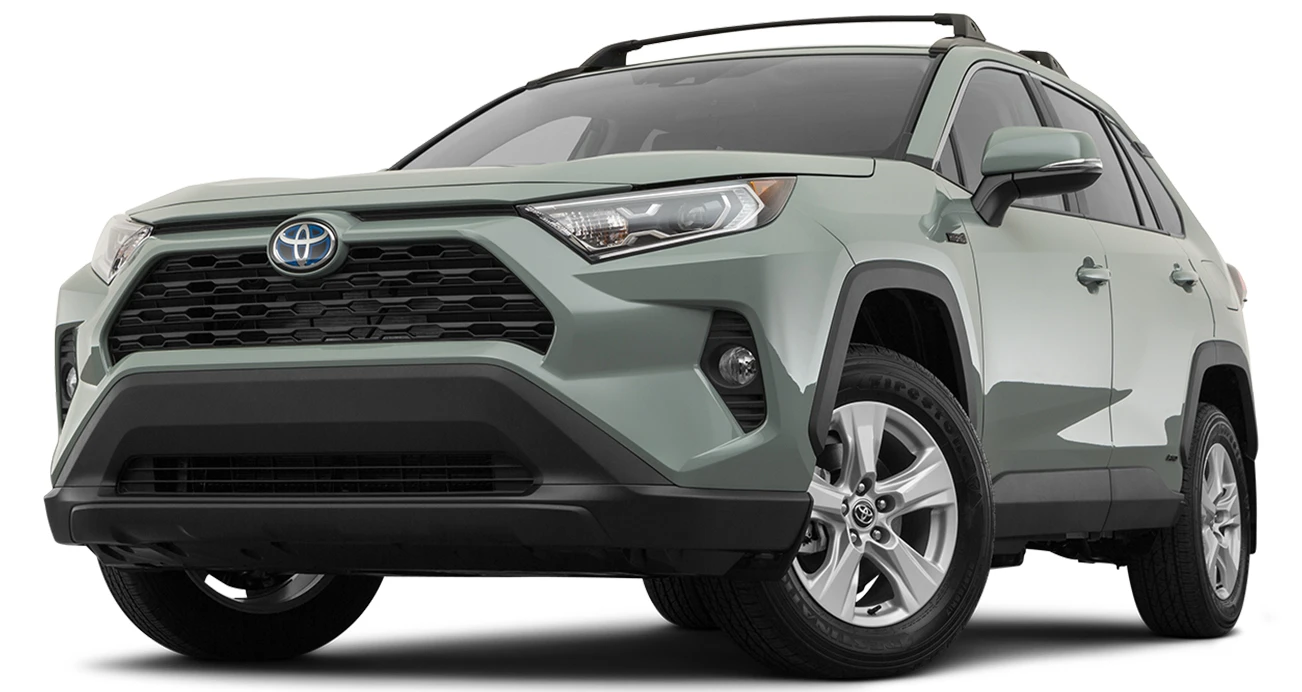
If you like the Toyota RAV4, one of the best-selling SUVs in the United States, you're likely to dig the RAV4 Hybrid. Its excellent fuel economy (EPA-estimated 40 mpg combined
), smooth ride, and excellent cargo space make it a terrific choice for those who want a little bit of everything. The 2023 RAV4 received an upgraded touchscreen to go with its comfortable, functional cabin.Ford Fusion Hybrid
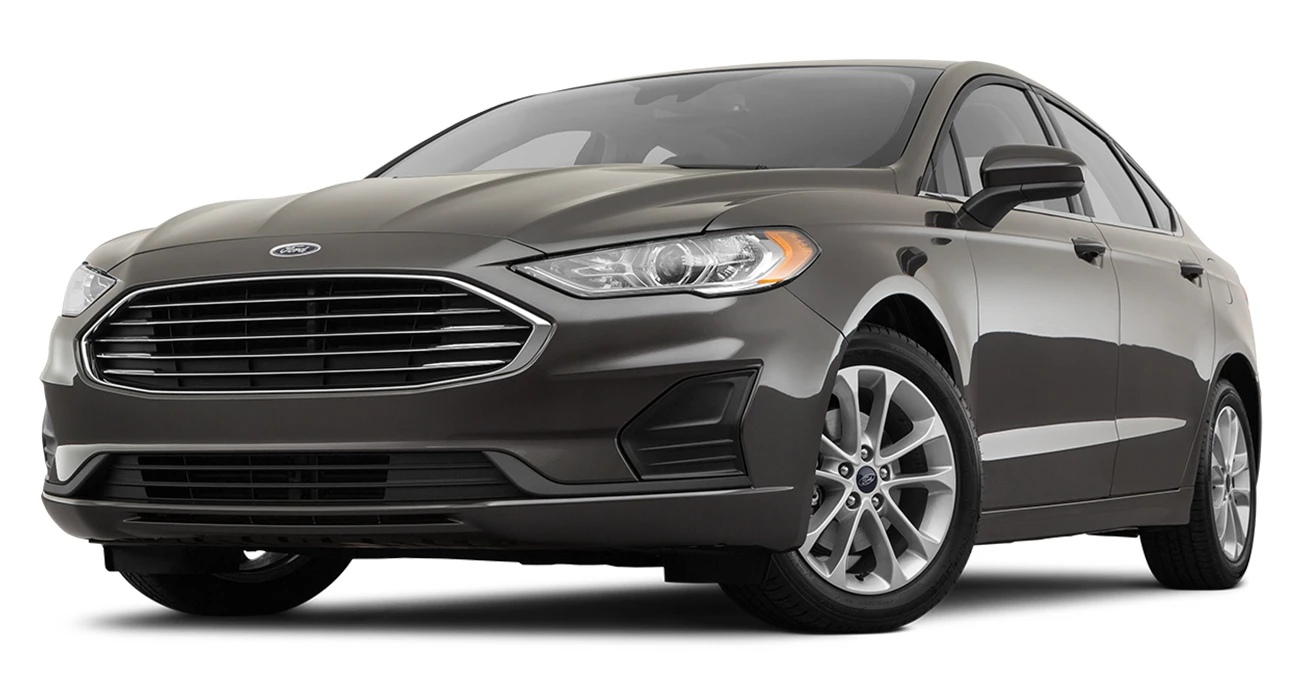
The Ford Fusion Hybrid, last produced for the 2020 model year, offers a slightly upscale interior and comfortable ride to go with good fuel economy (42 mpg combined). It's not quite as thrifty on gas as some of its sedan competitors (the hybrid versions of the Accord and Camry get up to an EPA-estimated 48 and 52 mpg, respectively
), but it can be a great value purchase as it comes with standard features like adaptive cruise control and a power driver's seat.Toyota Camry Hybrid
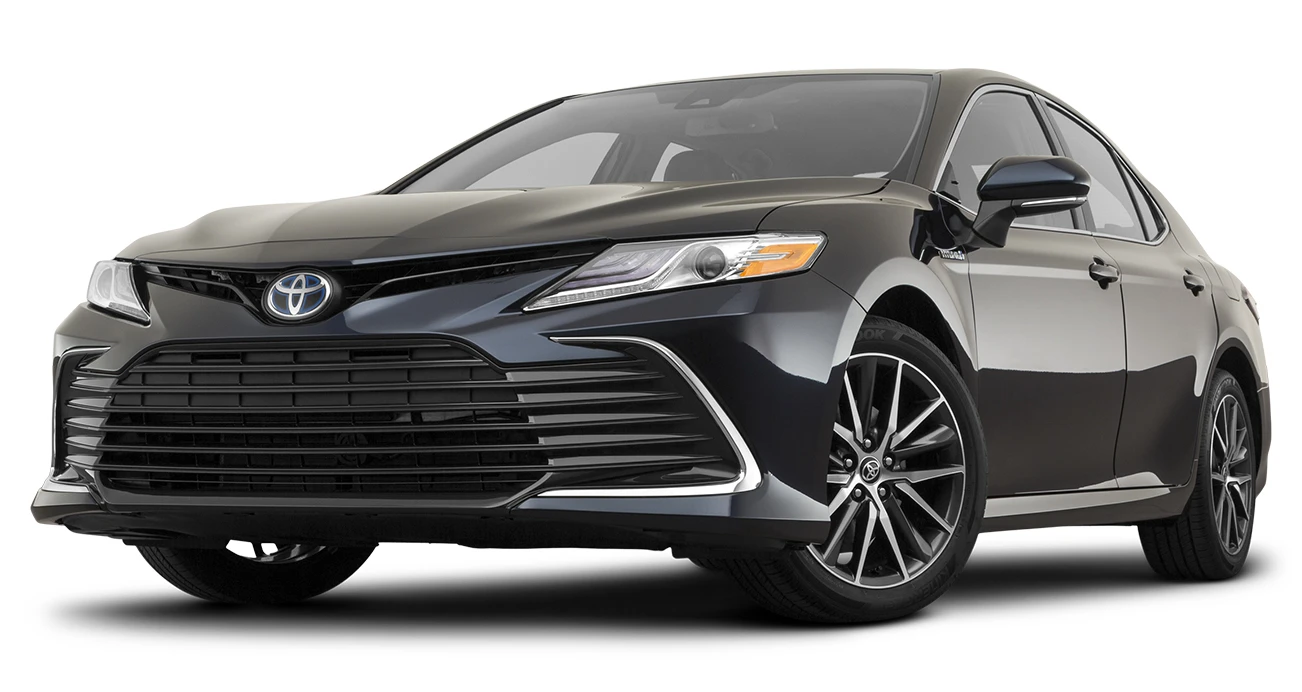
The Toyota Camry Hybrid has everything there is to like about the all-gas Camry but with better fuel economy. The hybrid boasts comfortable seating, advanced driver-assist equipment as a standard feature, and a good-looking interior in addition to getting an incredible EPA-estimated 52 mpg combined
with the base LE car. You'll also get standard Apple CarPlay and Android Auto in the 2020 model year and later Camry hybrids.Honda Accord Hybrid

The Honda Accord Hybrid existed as a stand-alone model from 2014 to 2022 and has now been folded into the standard Accord. To get a hybrid on a 2023 or later Accord, you'll need to reach for one of the top four trim levels. Accords built for the 2022 model year or earlier get impressive fuel economy (EPA-estimated 47 mpg combined
) and are pretty fun to drive by hybrid standards. You get the roomy interior and comfortable drive you expect from an Accord with the added bonus of a thriftier powertrain.Here are some hybrids you might not know about
Looking for something a little different but still want a hybrid? Here are five hybrids that offer a mixture of great driving dynamics, plenty of storage, and most importantly impressive fuel economy.
Toyota Sienna
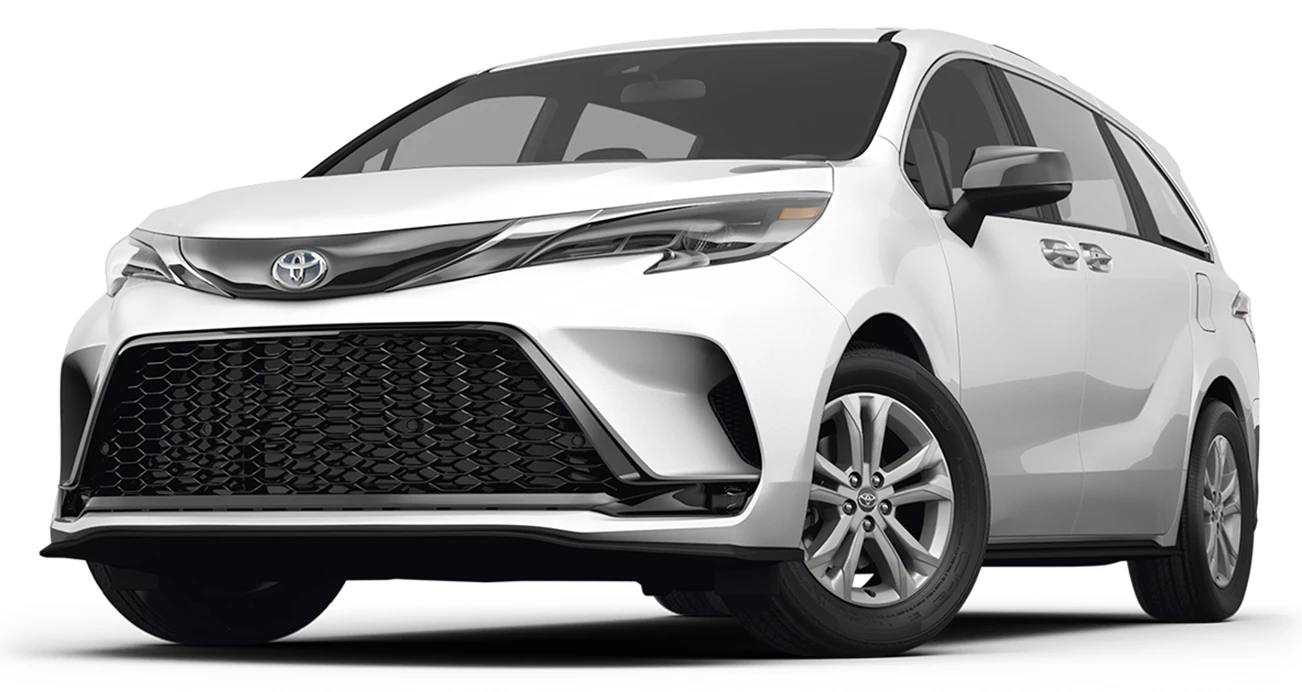
Fourth-generation Toyota Siennas (2021-present) are only available as hybrids. So, one of the top minivans on the market also comes with an EPA-estimated combined fuel economy of 36 mpg and a tank that can take you upward of 500 miles before needing a refill
. That's in addition to a roomy interior and clear views from the driver's seat. The Sienna gets you all the utility of a minivan with a less painful trip to the pump.Kia Sportage Hybrid

The Kia Sportage Hybrid debuted in 2023 and made quite an impression. Its interior and rear cargo area are quite roomy, many advanced driver aids come standard, and it gets a solid EPA-estimated 38 mpg combined
. Some standard features include lane departure warning, automatic emergency braking, and Apple CarPlay and Android Auto compatibility. The second-level EX trim will get you more creature comforts, like heated seats and a heated steering wheel, in addition to more driver aids like blind-spot intervention and rear cross-traffic warning.Ford Escape Hybrid
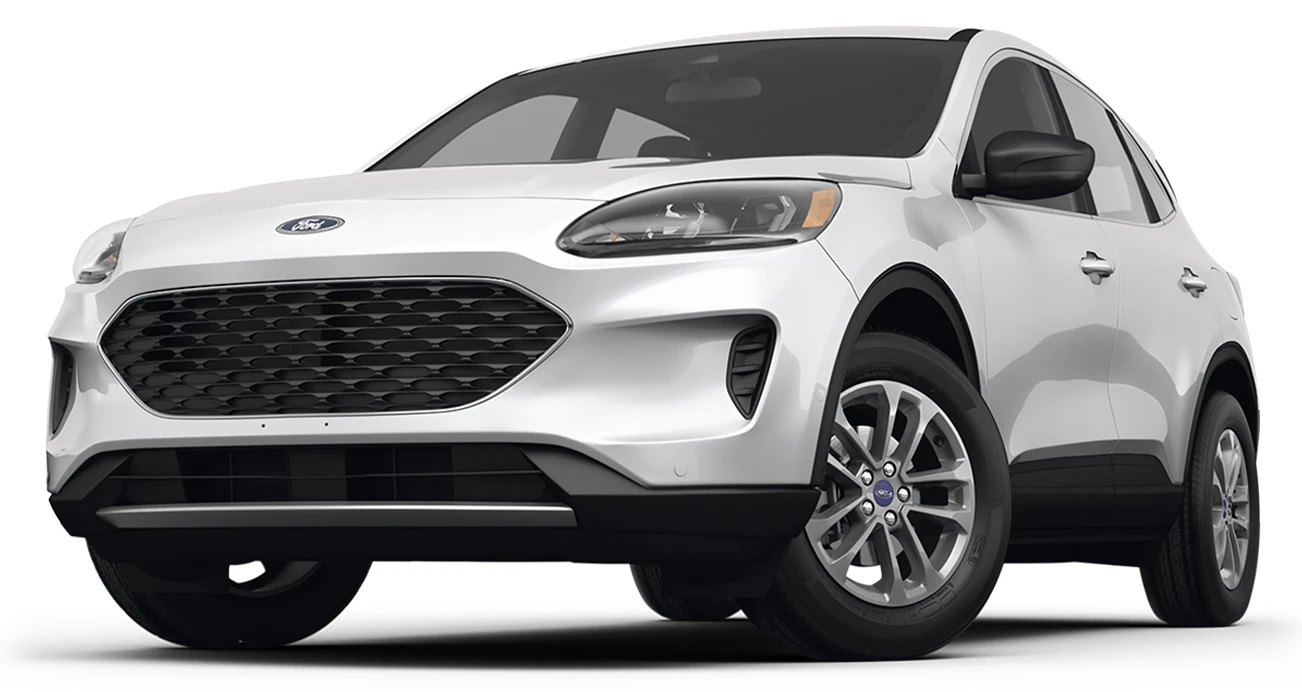
Redesigned in 2020, the Ford Escape offers hybrid and plug-in hybrid powertrains alongside its standard turbocharged 1.5-liter engine. You can get the hybrid on the third trim (ST-Line) and higher, which gets you a solid EPA-estimated 39 mpg combined
. The technology is a highlight thanks to a useful center touchscreen; advanced driver aids like forward collision mitigation and blind-spot warning are also standard features.Hyundai Sonata Hybrid
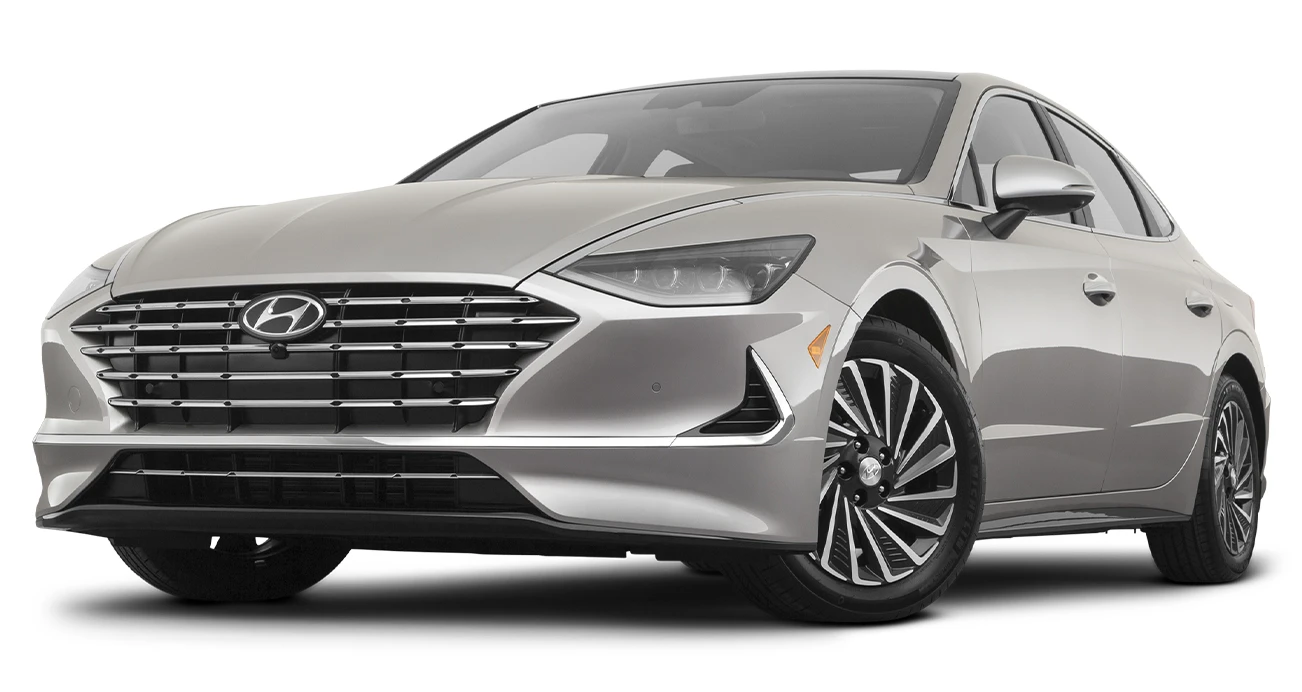
The Sonata Hybrid gets great fuel economy for a midsize sedan, equaling the rival Camry Hybrid's EPA-estimated 52 mpg combined
on the base Blue trim. Higher trims get an EPA-estimated 47 mpg combined, both of which outstrip the non-hybrid Sonata's 32 mpg combined. The cabin is roomy and comfortable and advanced driver aids like adaptive cruise control and blind-spot intervention are standard on the base trim.Honda CR-V Hybrid
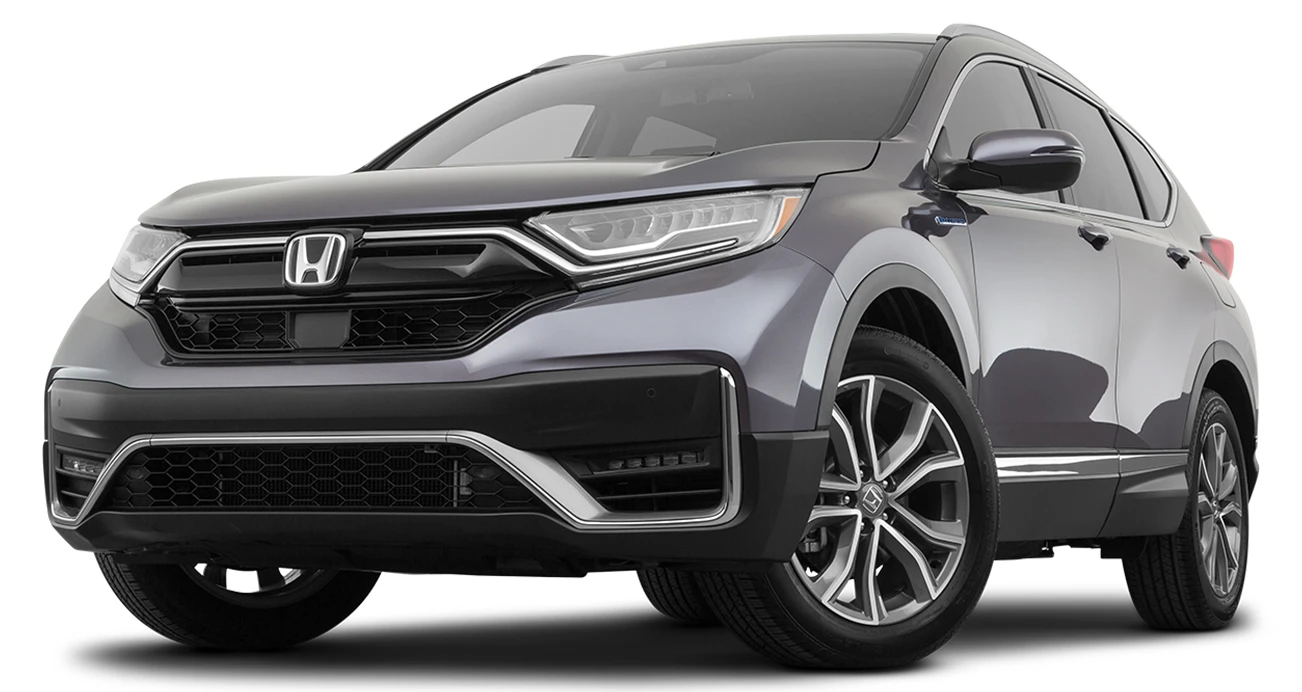
First offered for the 2022 model year, the CR-V Hybrid delivers decent fuel economy (EPA-estimated
38 mpg combined) and everything you love about the non-hybrid CR-V. Its comfortable ride and accommodating seats combine with great visibility and plenty of cargo space to add to its appeal. Advanced driver aids like adaptive cruise control and forward collision mitigation are standard on the base EX trim, making the CR-V Hybrid a solid value buy.Ford F-150
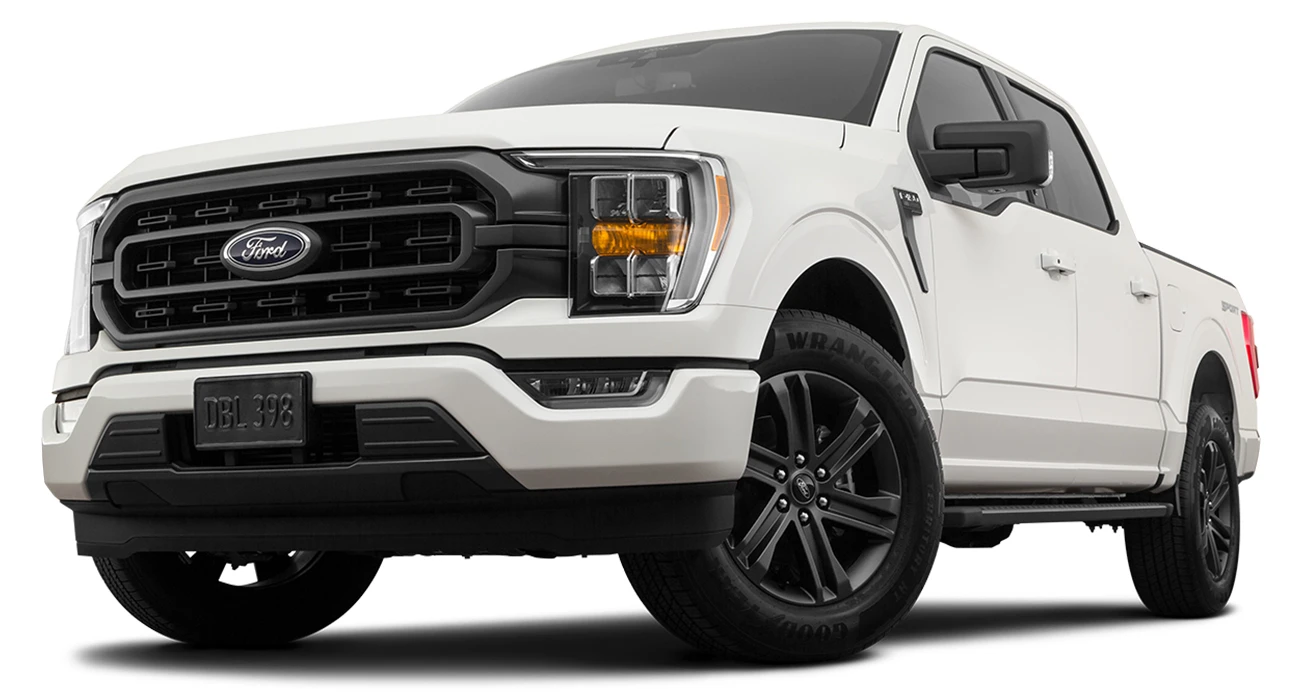
Yes, you can get a hybrid pickup truck. You can actually get two, as both the Ford F-150 and Ford Maverick have available hybrid powertrains. The F-150 was redesigned in 2021 and with that came the option for a hybrid engine. That increased its EPA-estimated fuel economy to 24 mpg
and boosted its torque to 570 lb-ft, the highest of any F-150. It can still tow 12,700 pounds when properly equipped, so you're not making any sacrifices by going hybrid with your pickup.Conclusion
Hybrids are better than ever and come in tons of flavors. If you're looking for a way to save at the pump but aren't quite ready to give fully electric vehicles a go, you should be able to find a hybrid that fits your life and budget.
